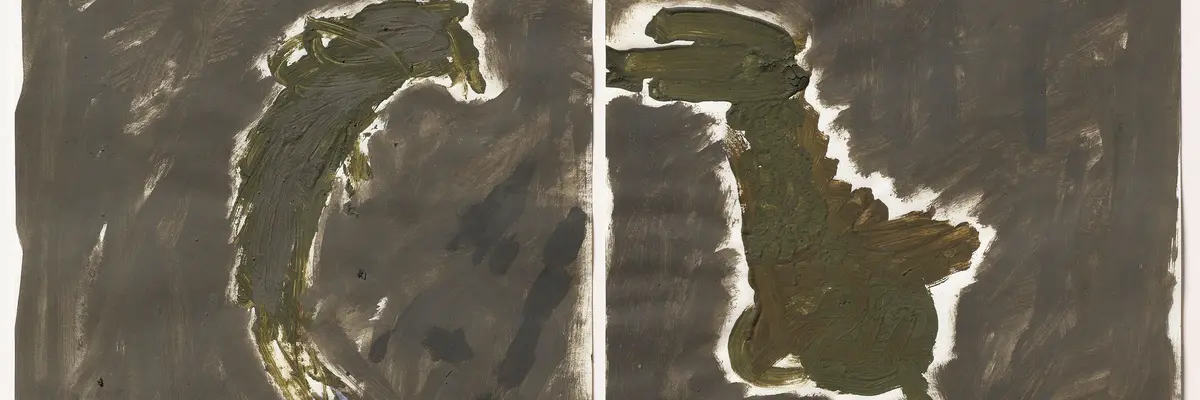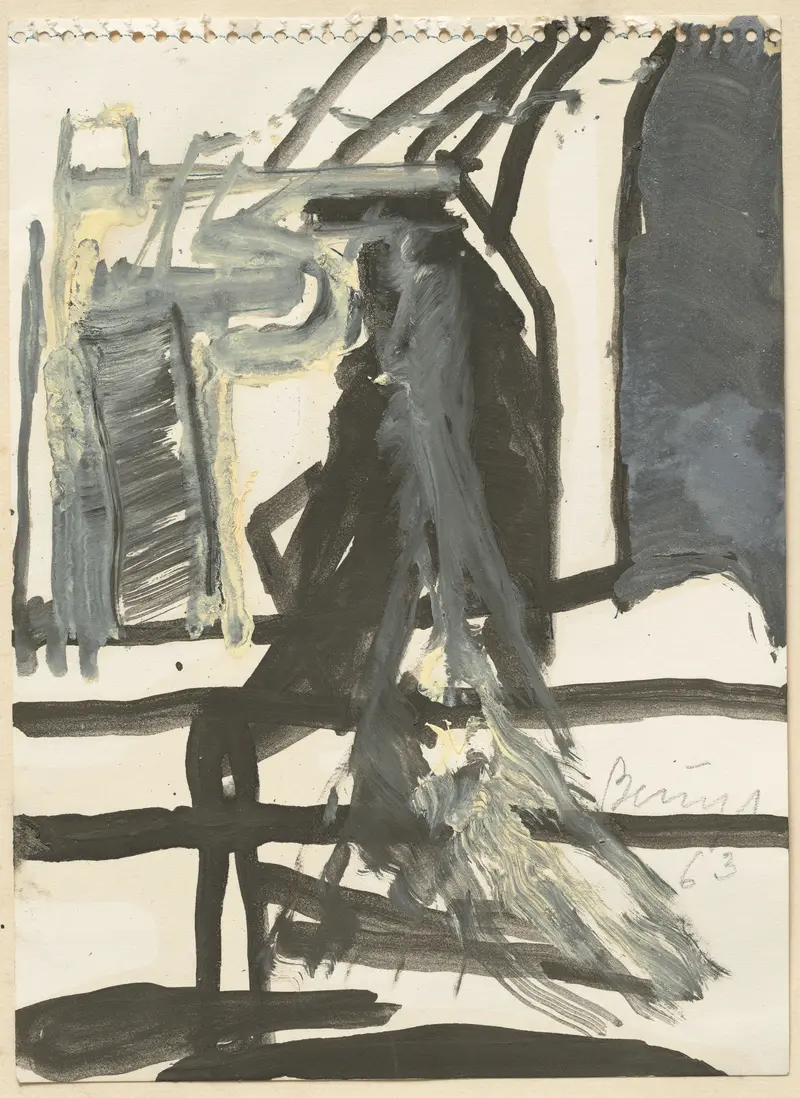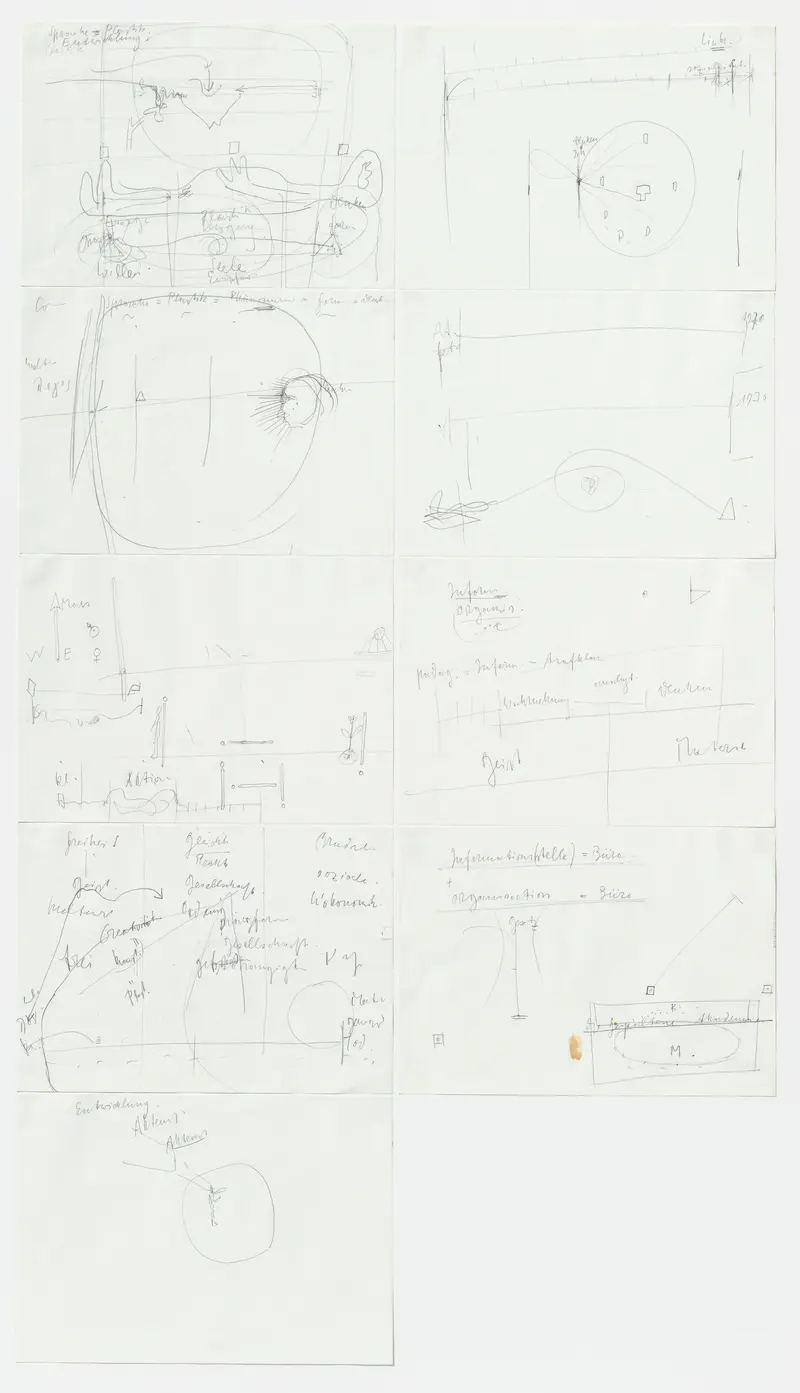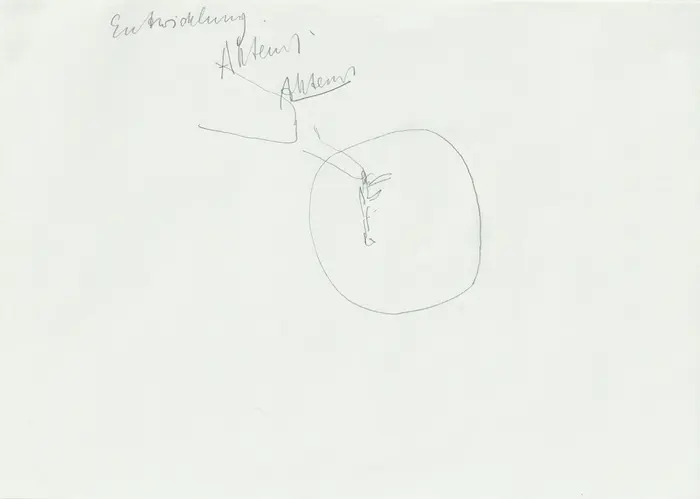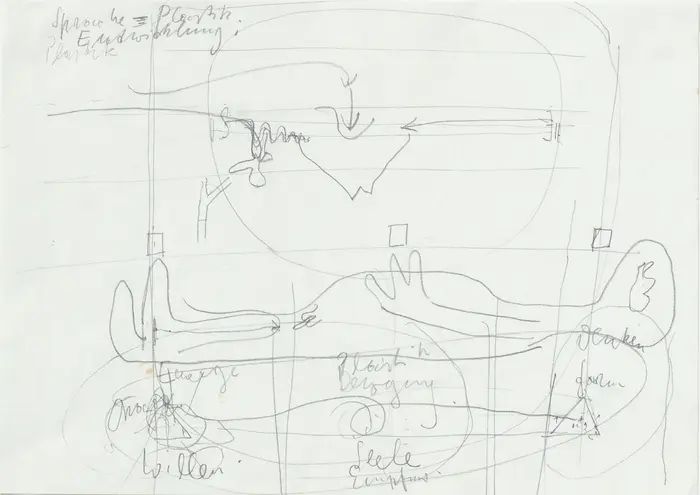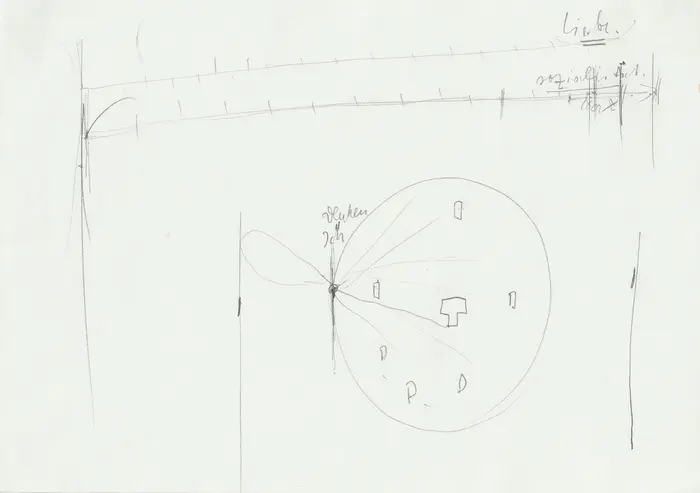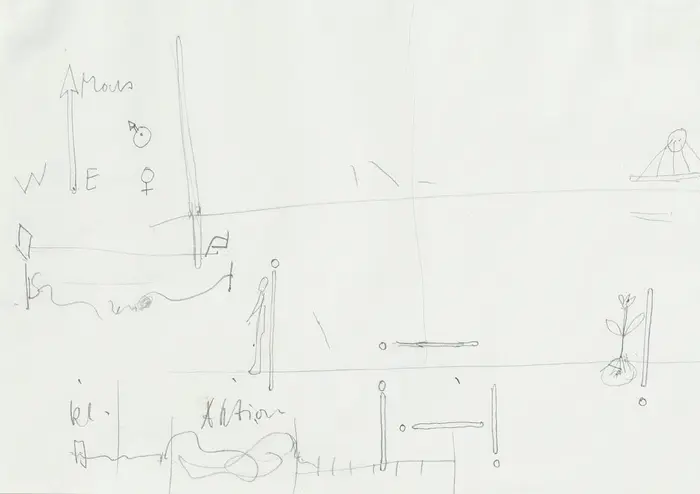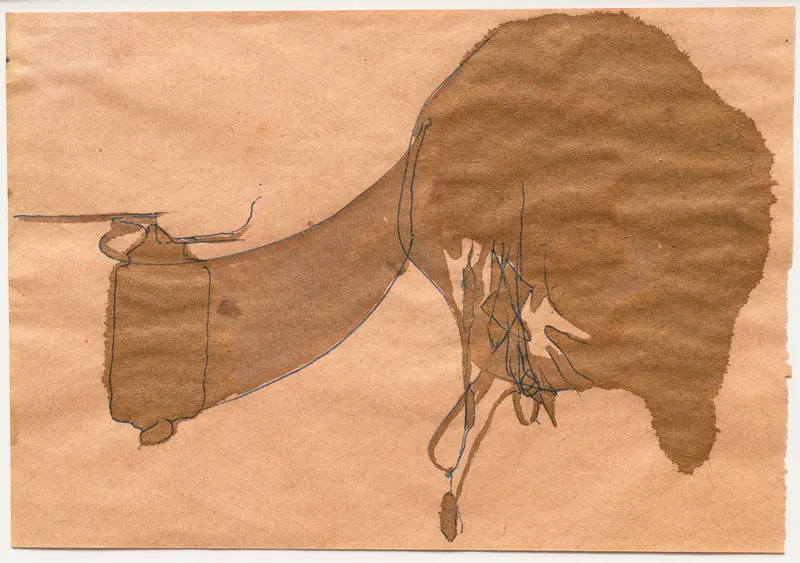Leaping Wolf Falling Bomb
The leaping wolf and the falling bomb can hardly be identified; instead, they resemble each other in their form and gray-green color, which one could associate as much with fur as with the military. Beuys’s focus is on the dynamic movement up and down, which he represents as a trajectory. As one of Beuys’s artistic leitmotifs, transition can be understood as the mutability of things. The wolf transforms itself into a bomb while the specific differences are blurred between organic and inorganic, between living and dead or deadly, so that at the center of the work stands the enriched energy of the symbolic and elemental forces wolf and bomb, shortly before their release becomes comprehensible.
